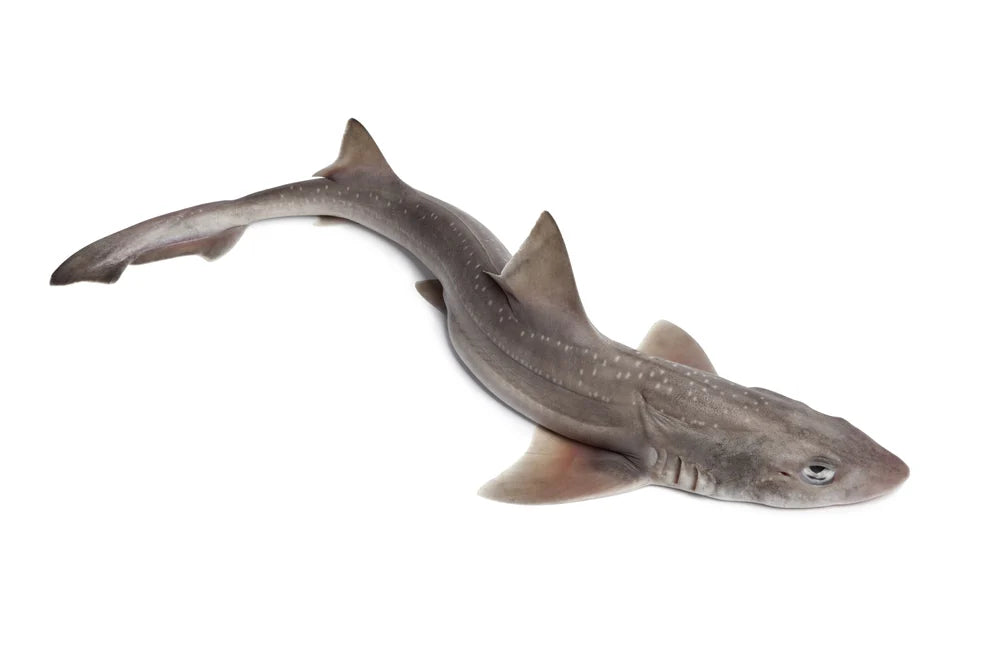Sorry, there are no products in this collection.
From Wikipedia) Sharks are a group of elasmobranch fish characterized by a cartilaginous skeleton, five to seven gill slits on the sides of the head, and pectoral fins that are not fused to the head. Modern sharks are classified within the clade Selachimorpha (or Selachii) and are the sister group to the rays.
There are about 500 species of sharks.
There are perhaps a half dozen or more sharks which are adaptable to aquarium life. For instance the epaulette shark mostly from Australia.
Common Name: Sharks example The epaulette shark Hemiscyllium ocellatum
Scientific name Hemiscyllium ocellatum
Discoverer and date: Pierre Joseph Bonnaterre in the 1788
The 29 species are in the family genus Siganus.
Where found (Wikipedia): Epaulette sharks are found in shallow water to a maximum depth of 160 ft and are often seen in water barely deep enough to cover their bodies. They prefer tidal pools, coral flats, and stands of staghorn coral.
The range of the epaulette shark extends from the southern coast of New Guinea to the northern coast of Australia, as far south as Sydney. The Capricorn-Bunker Group of the Great Barrier Reef contains a particularly large population, with thousands estimated to inhabit the reefs around Heron Island alone. Additionally, there are unsubstantiated reports of this species from Malaysia, Sumatra, and the Solomon Islands.
Description: (Wikipedia)The epaulette shark has an elongated body, over half of which is comprised by the slender caudal peduncle. The snout is short and rounded, with the nares placed almost at the tip along with a pair of tiny barbels; there are grooves running from the nares to the mouth. There are 26–35 tooth rows in the upper jaw and 21–32 tooth rows in the lower jaw. The teeth are small, with broad bases and triangular cusps. The eyes are oval in shape and elevated, with a large spiracle below each. The five pairs of gill slits are small, with the fourth and fifth very close together.
The pectoral and pelvic fins are broad and rounded and are thickly muscled. The two similarly sized dorsal fins are placed well back on the body. The anal fin is low and positioned just in front of the caudal fin. The caudal fin has only an upper lobe, which contains a prominent ventral notch near the tip and is angled almost horizontally relative to the body. Adult epaulette sharks are beige to brownish above with many widely spaced brown spots and subtle darker bands. There is a very large black spot ringed in white located behind each pectoral fin; this pair of spots are the origin of this shark's common name. Juveniles have alternating light and dark bands over their body and fins, which break up as they mature. Epaulette sharks are typically 27.5–35.5 in long; the maximum reported length is 42 in.
Sharks are found in all seas. They generally do not live in fresh water, with a few exceptions such as the bull shark and the river shark which can swim both in seawater and freshwater. Sharks are common down to depths of 7,000 f), and some live even deeper, but they are almost entirely absent below 10,000 ft. The deepest confirmed report of a shark is a Portuguese dogfish at 12,100 ft.
Evidence for the existence of shark-like chondrichthyans dates from the Ordovician period, 450–420 million years ago, before land vertebrates existed and before a variety of plants had colonized the continents
The epaulette shark is an opportunistic predator of benthic crustaceans, worms, and small bony fish. Off Heron Island, over 90% of the epaulette shark's diet consists of polychaete worms and crabs, and they are crepuscular.


